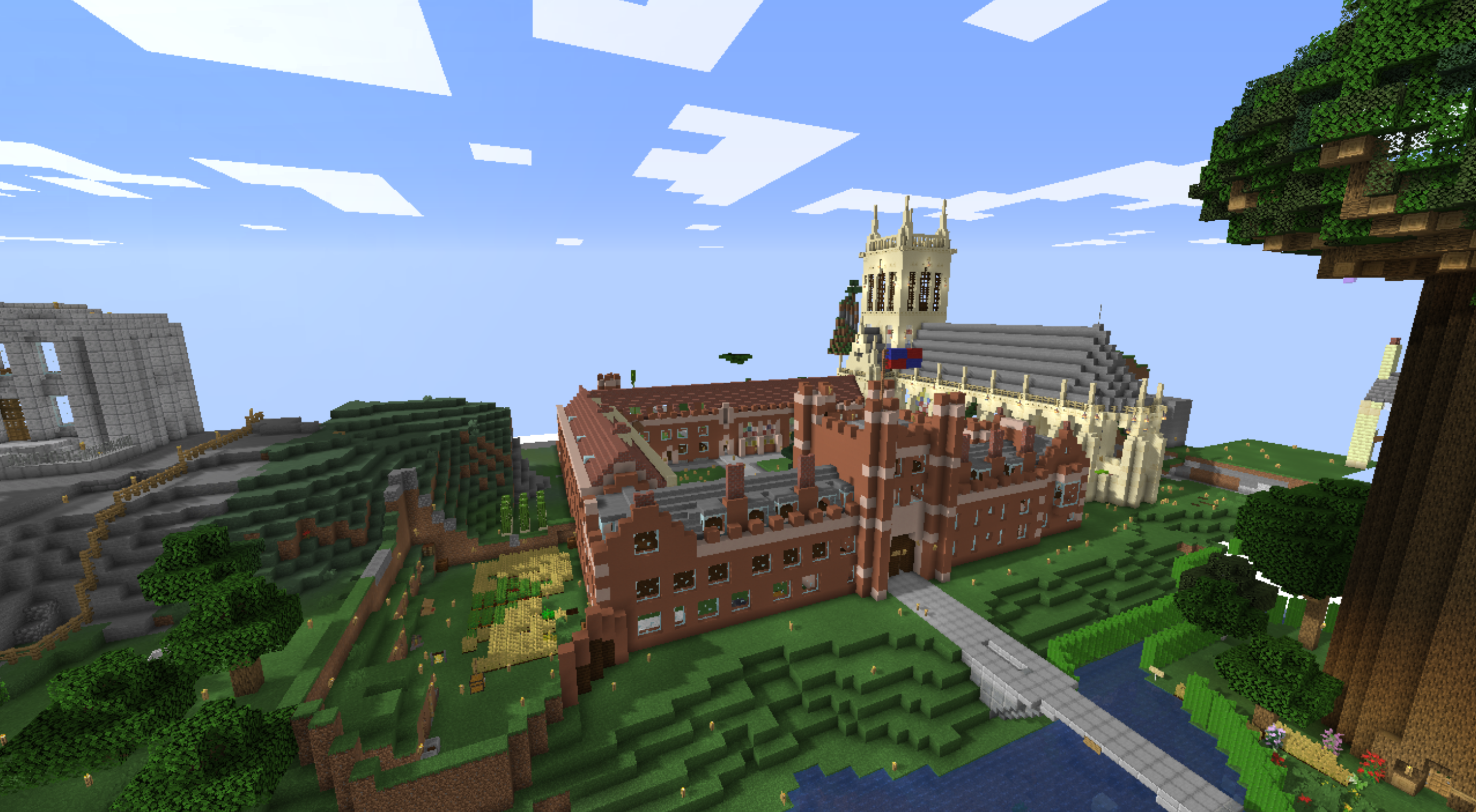Minecraft Cambridge
The platform for an online community

Players have added a Casino to the Minecraft Cambridge world.
Players have added a Casino to the Minecraft Cambridge world.
A Minecraft server set up by one of our undergraduates to help students missing Cambridge during lockdown is now the platform for a University-wide virtual community.
Final year student Computer Science student Sam Sully – whose Part II project, fittingly, explores a peer-to-peer architecture for distributed online worlds – set up a Cambridge Minecraft server in late March.
Since then, almost 1,000 people from across the University have come to play in the virtual Minecraft Cambridge and join the community it offers.
“As well as undergraduates, there are recent graduates, members of staff, Cambridge University Student Union officers and even some offer-holders for next year all playing along,” Sam says. “It’s great to see that its appeal reaches right across the University.”
“People have been very grateful to have something fun to do at this strange and stressful time. A lot of players have told me that it’s a good way to keep in touch with friends that they would normally be seeing at this time, but are unable to meet at the moment.”
"Playing on the Cambridge-wide Minecraft server appealed to me since I was missing travelling through Cambridge and I thought it was a nice way of meeting new people."
Recreating Cambridge online has clearly appealed to players’ creativity. Many have painstakingly built virtual reproductions of buildings at colleges including St John’s, Emmanuel (pictured right), Downing and St Catharine’s, or have added imaginary landmarks (like a casino) to the Cambridge skyline.
And they have enjoyed doing so. Marno van der Maas, who is studying for a PhD with Simon Moore as part of the Computer Architecture group in this department, has relished the experience.
“Playing on the Cambridge-wide Minecraft server where people were recreating college buildings appealed a lot to me since I was missing travelling through Cambridge and I thought it was a nice way of meeting new people,” he says.
“Although virtual platforms are not the same as interacting in-person, it definitely lifted my spirits in these unusual times,” he adds. “I enjoyed exploring the beautiful buildings that other people have built on the server, and I also wanted to contribute to the server and represent Clare Hall by building the Brian Pippard Building, which I see from my college room.” (See Marno's video above.)
Emmanuel College, as seen in Minecraft Cambridge.
Emmanuel College, as seen in Minecraft Cambridge.
St Catharine's College, reimagined in Minecraft Cambridge.
St Catharine's College, reimagined in Minecraft Cambridge.
Sam had previously run a Minecraft server back at school. But he hadn’t bargained for the popularity that the Cambridge one would enjoy.
Within a week of launch, Sam had to upgrade the machine he was running the server on because of demand. So he is grateful for the support he has received from several colleges.
“Thankfully, the JCRs of Christ’s, Girton, Newnham, Pembroke, Robinson and Wolfson who are each paying a share of the running costs.”
It is precisely the popularity of online games like Minecraft – part of the Massively Multiplayer Online game genre – that inspired Sam’s Part II project, ‘Voxel Populi: A Decentralised Peer-to-Peer Voxel-Based World’.
Such games can have thousands of players playing concurrently and because of the demand on processing resources, this makes the game difficult to manage.
"This is a great initiative: it's a way to stay connected to Cambridge and our community at a time when people and places seem distant."
In his project, which was supervised by Professor Jon Crowcroft, Sam set out to investigate how feasible it would be to create a scalable, peer-to-peer distributed online world, instead of the more commonly used centralised client-server model, using a Minecraft-style world as his paradigm.
“A client-server model,” he explains, “requires some form of ‘sharding’ where players are separated into independent instances of the same world, meaning that players can only interact with others who are connected to the same instance (or ‘shard’) as them.
“An alternative approach is to distribute the game world over a peer-to-peer network where each peer (or group of peers) is responsible for managing a small part of the world. This helps with load balancing while ensuring that all players are – effectively – in the same virtual world.”
He successfully demonstrated in his project that the approach he used could work, “although I think I might continue it by refining it to make it perform better.”
And he will also be continuing to run the Cambrige Minecraft server even after he graduates at the end of this term. “It will go on running until no-one’s playing on it,” he says, “because a number of players are really enjoying it.”
And that will make his players happy. Marno says: “This is a great initiative: it’s a way to stay connected to Cambridge and our community at a time when people and places seem distant.”
A nighttime scene from Minecraft Cambridge.
A nighttime scene from Minecraft Cambridge.
Emmanuel in Minecraft Cambridge
Emmanuel in Minecraft Cambridge





